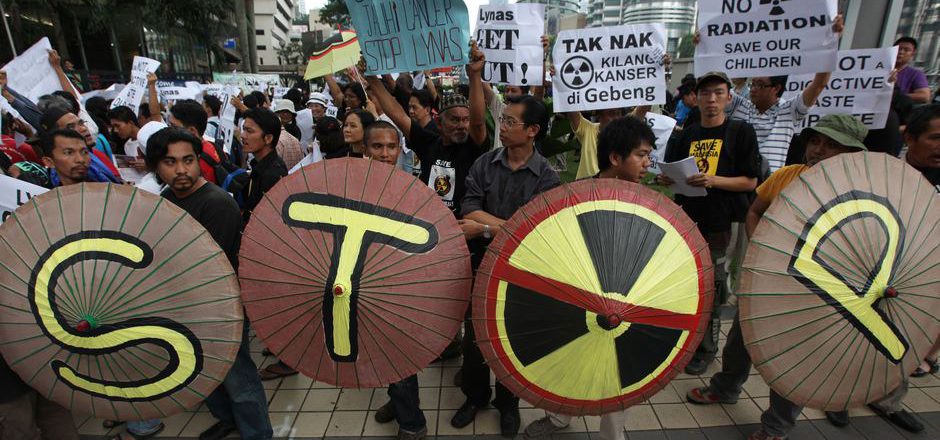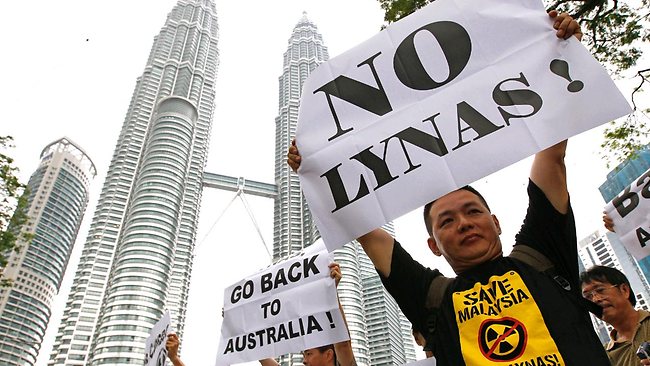
It’s more than likely that you’re reading this on a smartphone or tablet. And you’re probably not the only one: Australians are some of the biggest users of these devices in the world. What we rarely consider however is how this technology affects the lives and communities of those who are caught up in its production.
The manufacture of the screen on your phone or tablet probably involved the use of minerals called rare earth elements. These minerals are not all that rare and can be found in many deposits around the world, including in Australia. But refining and processing them so that they can be used in later production processes creates toxic and radioactive materials, exposure to which can be hazardous to human health. Residents of the Malaysian town of Bukit Merah, Penang, blame the radioactive waste from a former rare earth refinery for a significant increase in cases of leukaemia and birth defects in their community.
Since 2011, an Australian company called Lynas Corporation Ltd (Lynas) has been mining rare earth elements in Mount Weld, Western Australia, about three hundred kilometres north of Kalgoorlie. According to Lynas, this is the richest known deposit of rare earth in the world. But the processing of the rare earth mined in Mount Weld takes place elsewhere – again in Malaysia, this time in Gebeng, Pahang, where Lynas has been operating a processing plant since September 2012.
Concerns about pollution and toxic waste from the Gebeng plant have led to a community campaign to close the facility. According to Lynas, waste from the plant is stored safely and the company has allowed parties interested in the site’s environmental impact to visit the plant, suggesting Lynas has nothing to hide. But those campaigning against the facility – who Lynas accuses of misinformation – say that environmental approval processes usually required by the Malaysian government were not required of Lynas, despite what they say is the high risk of bad health and environmental outcomes.
The concerns of protesters are understandable if one considers the environmental impact of the former Asian Rare Earth (ARE) plant in Bukit Merah, which operated from 1982 to 1994. According to ecological economist Dr Yoshihiko Wada, from DoshishaUniversity in Kyoto, Japan, the ARE plant has caused “severe radioactive contamination” in and around Bukit Merah.

Dr Wada states that radioactive waste from the ARE refinery was first dumped by the company before inadequate storage led to leakage into local rivers and lakes. As a result, nearby land, air and water was severely contaminated by hazardous and dangerous radioactive materials, including Thorium 232, which has a half-life of more than 14 billion years. It can cause cancers in cases of overexposure. At the time, the levels of radioactivity near the site were measured to be from fifty times to more than seven hundred times higher than what is considered normal.
Former plant workers and locals allege that the increase in the number of cancer deaths and children born with severe physical or mental impairments is directly linked to what they say is the failure of ARE to properly dispose of the radioactive material. The level of radioactivity at the permanent waste dump located at the site of the former refinery is said to be hazardous even though the plant has not been operating for 20 years.
There is now fear in the community that history could repeat itself. The storage facilities for radioactive materials at the Lynas plant were criticised early last year as poor and insufficient by German research institute Oeko-Institut. Lynas denies that waste from the plant is not being stored properly and safely, but whether or not the company has remedied the specific problems identified by the institute is unclear.
Two environmental groups involved in the community campaign to close the Lynas plant, Save Malaysia Stop Lynas and Himpunan Hijau, have led dozens of protests in Malaysia and Australia as part of what they say is “the biggest environmental movement in Malaysia”. According to the groups, more than 1.2 million Malaysians have signed a petition demanding the closure of the plant, and in October last year, protesters blockaded a Malaysian port in order to prevent the delivery of rare earth materials to the Gebeng plant.
Together with concerned members of the Malaysian community, Australians can and should expect that the production and supply of materials that help create the technological devices we use every day is done safely and without harm to others. Ironically, the technology itself can play a part in ensuring this: Lynas blamed the successful use of social media by anti-Lynas campaigners for delays in the planning approval of the Gebeng plant.
SMSL has given Lynas until June 29 this year to close its operations in Gebeng and is planning a national day of protest in Malaysia on this day.

